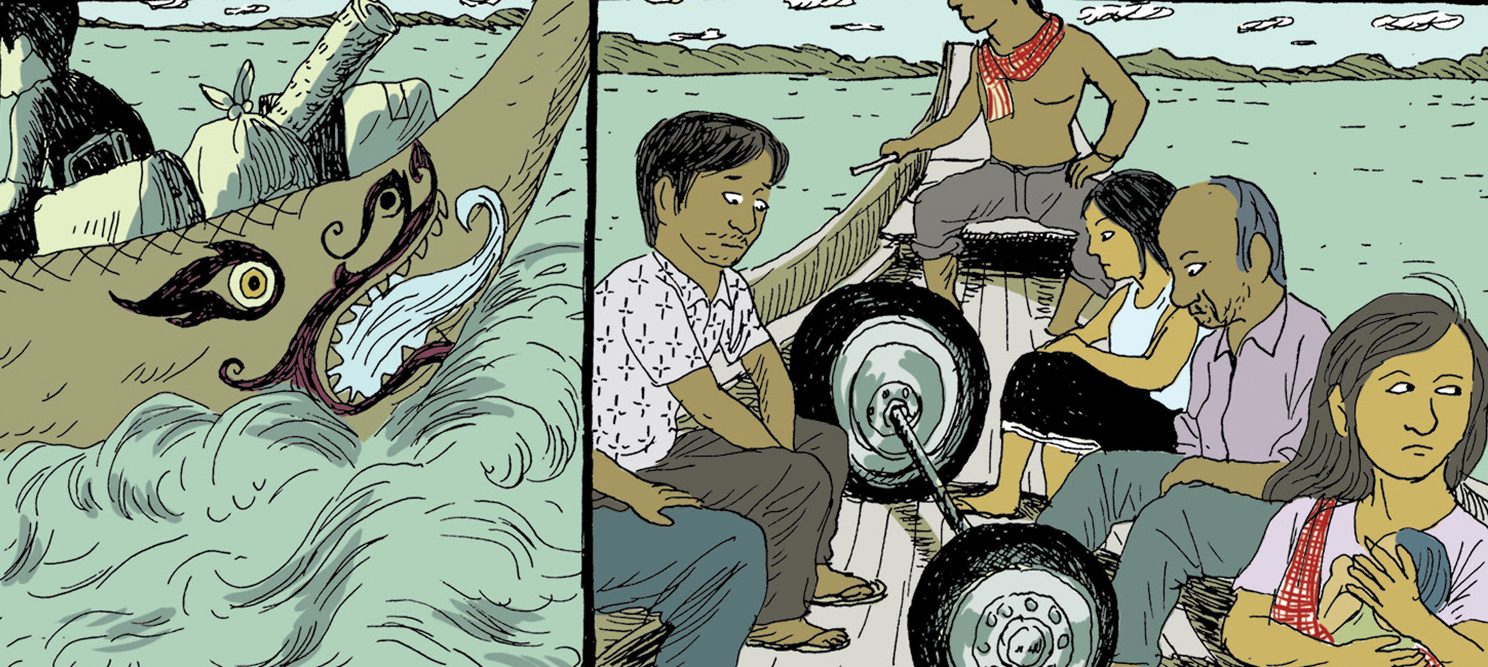Tian Veasna’s Year of the Rabbit is a gripping tale of fleeing the Khmer Rouge
In his first graphic novel French-Cambodian illustrator and writer Tian Veasna, born in Cambodia just days after the Khmer Rouge seized power over the country in 1975, tells the story of his family’s struggle to escape, tracing their evacuation from Phnom Penh, through their forced relocation to labour camps, to their desperate attempts to reach a refugee camp on the border of Thailand. Along the way, family members die or are ‘disappeared’. Maps, useful ‘tips’ for survival and statistics divide the chapters: from these we learn that the route to Thailand is long and treacherous, that you can trade one bar of soap for two kilograms of rice, that nearly a third of the country’s population died in four years.
Told through detailed drawings, the images are skewed towards blue, green and sepia tones, the cool colours curiously offsetting the violence and horrors perpetrated by the Khmer Rouge. There are scenes in which Veasna’s uncles wade through a trench of human remains, their eyes wide with fear; a boatful of people are massacred, the river’s water turned red; and a man recalls the violence and torture he endured at a Khmer Rouge prison. There are grippingly tense moments where his parents look like they might be caught, arrested or killed in similar situations, but are saved at the last minute by small human kindnesses: an old peasant stops Khmer leaders from forcing them onto that fateful boat, a Khmer chief who lets them live peacefully in the labour camp after Veasna’s father (a doctor) treats his gravely sick child, a poor villager who lets them shelter in his hut as they travel towards Thailand.
A comic book might not be the most obvious venue for an education in these human atrocities. However, the combination of powerful imagery, personal stories and few but carefully chosen words make for an affective and human-centred way of recording tragedies that the often dispassionate and objective prose of traditional history books struggles to achieve.
Year of the Rabbit, by Tian Veasna, is published by Drawn & Quarterly
